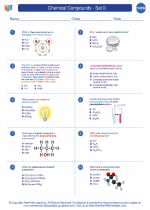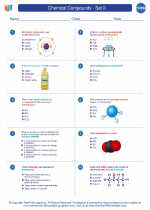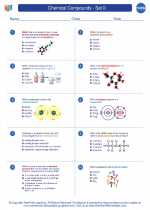Chemical Composition
Chemical composition refers to the identity and relative quantity of the elements that make up a substance. At the atomic level, all matter is composed of elements, which are pure substances made up of atoms with the same number of protons. The chemical composition of a substance can be represented using chemical formulas, which show the types and numbers of atoms present in a compound.
Elements and Compounds
Elements are substances that cannot be broken down into simpler substances by chemical means. Each element is represented by a unique chemical symbol, such as H for hydrogen, O for oxygen, and Na for sodium. Compounds, on the other hand, are substances composed of two or more elements that are chemically bonded in fixed proportions, such as water (H2O) and carbon dioxide (CO2).
Chemical Formulas
Chemical formulas are used to represent the chemical composition of substances. For example, the chemical formula for water is H2O, indicating that each water molecule is composed of two hydrogen atoms and one oxygen atom. The subscript numbers in a chemical formula indicate the number of atoms of each element present in the compound.
Stoichiometry
Stoichiometry is the study of the quantitative relationships in chemical reactions. It involves using the chemical composition of substances to predict the amounts of reactants and products in a chemical reaction. This is important for understanding how much of each substance is needed for a reaction to occur and how much product will be formed.
Study Guide
- Learn the periodic table: Familiarize yourself with the names and symbols of common elements and their atomic numbers.
- Understand chemical bonding: Learn about how elements combine to form compounds through chemical bonds, such as ionic and covalent bonds.
- Practice writing chemical formulas: Practice writing the chemical formulas for various compounds and understanding the meaning of the subscripts in the formulas.
- Study stoichiometry: Understand the concept of balancing chemical equations, calculating molar masses, and performing stoichiometric calculations.
- Work on problem-solving: Practice solving problems related to chemical composition, such as determining the mass or moles of a substance in a given chemical reaction.
◂Chemistry Worksheets and Study Guides High School. Chemical Compounds - Set II

 Worksheet/Answer key
Worksheet/Answer key
 Worksheet/Answer key
Worksheet/Answer key
